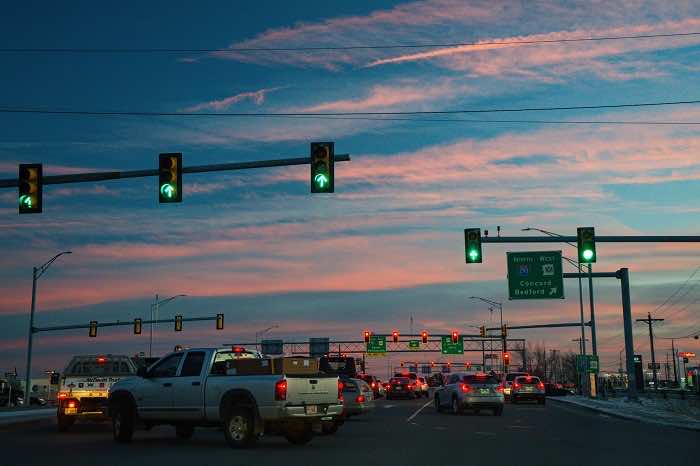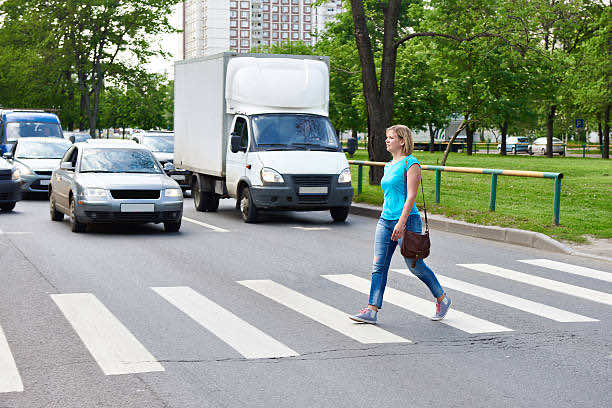The roads are always congested, and cars wait in long lines at signals. Long traffic jams are particularly bothersome at busy hours. As part of the KI4LSA and KI4PED projects, researchers at the Fraunhofer Institute for Optronics, System Technologies, and Image Exploitation IOSB in Lemgo are using artificial intelligence for smart traffic light regulation.
In the future, self-learning algorithms combined with additional sensors might enable better traffic flow and shorter wait times and improved pedestrian safety at crossings. Artificial intelligence is being used by research teams from the Fraunhofer Institute for Optronics, System Technologies, and Image Exploitation IOSB and the Institute Branch for Industrial Automation (INA) to allow smart, predictive light switching.

Traditional traffic signals employ rule-based systems, which do not operate in all traffic scenarios. Instead of conventional sensors, the new technology uses high-resolution cameras and radar sensors to capture the actual traffic situation. This enables the number of cars waiting at an intersection to be adequately measured in real-time.
Furthermore, the system determines the average speed of automobiles and the waiting durations. The real-time sensors are integrated with artificial intelligence, which takes the role of traditional rigid control principles. Deep reinforcement learning (DRL) methods are used in AI, a machine learning technology that focuses on discovering intelligent solutions to challenging control issues.
“We used a junction in Lemgo, where our testing is carried out, to build a realistic simulation and trained the AI on countless iterations within this model. Before running the simulation, we added the traffic volume measured during rush hour into the model, enabling the AI to work with real data. This resulted in an agent trained using deep reinforcement learning: a neural network that represents the lights control,” Arthur Müller, project manager and scientist at the Fraunhofer IOSB-INA.

Such algorithms determine the best switching behaviour for traffic signals and the ideal phase sequence to cut waiting times at intersections, reduce trip durations, and reduce noise and CO2 pollution produced by queued vehicles. The AI algorithms are executed on an edge computer at the junction’s control box.
The simulation phases conducted on the congested Lemgo intersection revealed that using artificial intelligence might enhance traffic flow by 10–15 percent. Over the next several months, the trained agent will be deployed to the streets for further testing in a real-world laboratory. This testing will also take into account the impact of traffic metrics on characteristics such as noise pollution and emissions.
Instead of just vehicles, the KI4PED concept is centred on pedestrians. Fraunhofer IOSB-INA is collaborating with Stührenberg GmbH and affiliated partners Straßen.NRW, the city of Lemgo, and the city of Bielefeld on a project that will continue till July 2022.
This must be highly helpful for elderly citizens or those with impairments. By allowing longer crossing durations, the goal is to minimise wait times and increase safety at pedestrian crosswalks.
The project wants to employ AI in conjunction with high-resolution LiDAR sensors to automate the process and automatically adapt and increase the crossing timings based on pedestrian demands. Based on data from LiDAR (light detection and ranging) sensors, the AI detects and tracks people in real-time in an embedded system.

“For data protection purposes, we are using LiDAR sensors rather than camera-based systems. These present the pedestrians as 3D point clouds, meaning that they cannot be individually identified,” explains Dr Dennis Sprute, project manager and scientist at Fraunhofer IOSB-INA.
A feasibility study will determine the optimal locations and alignment at the crossing. Then, using a needs-based control method adapted to the given circumstances, the project hopes to reduce waiting times by 30%. They also expect to reduce the number of jaywalking incidents by 25%.
Source: Fraunhofer


